Last updated: 2 August 2023
Ostrava, the third-largest city in the Czech Republic, has a rich history with significant industrial roots. Ostrava’s skyline is dotted with architectural heritage which reflects the evolution and transformation of the city’s identity from its industrial past into a culturally vibrant and diverse present.
When visiting, be sure to pack your walking shoes, Czech architecture in Ostrava is best discovered on foot.
This post is sponsored by CzechTourism to celebrate 30 years of the existence of the Czech Republic.
Ostrava’s mining heritage
Evidence of the mining industry is all around Ostrava, once known as the steel epicentre of the Republic.
Ostrava is renowned for its rich industrial history, and exploring the city provides a unique opportunity to witness the history of Ostrava’s architecture. This industrial heritage sets Ostrava apart from other destinations and offers a distinctive atmosphere.
Unlike many cities that have torn down and hidden their industrial past, Ostrava leant into it, converting metallurgy remnants and relics, bequeathed to the city into factories, halls, and towers which have embraced a new cultural and social existence.
From the iconic Vitkovice Ironworks to deep mines, visitors can experience the transformation of former industrial complexes into vibrant cultural and educational centres.
Notable Czech Architecture in Ostrava
Dolní Vítkovice
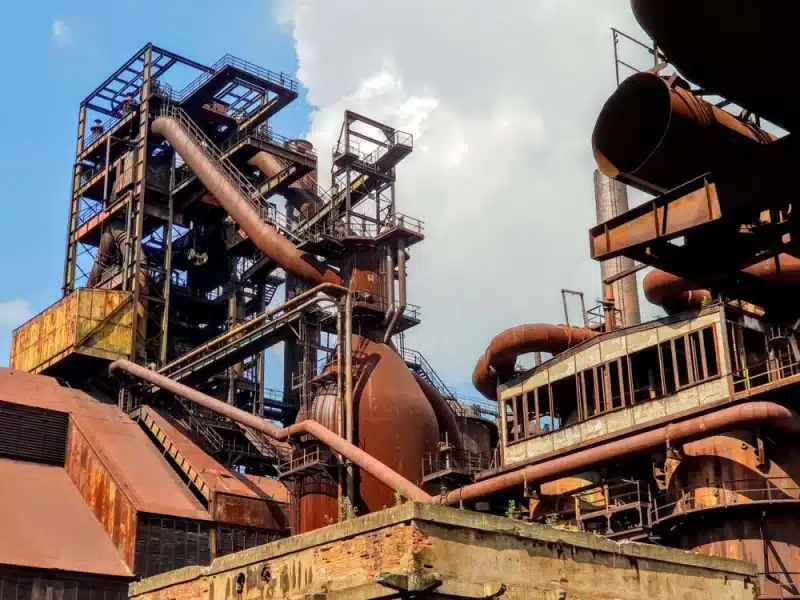
This significant industrial complex played a crucial role in the development of Ostrava as an industrial centre during the 19th and 20th centuries. For 170 years, coal was extracted and crude iron was produced here.
The Vitkovice Ironworks is an industrial complex so significant that in 2002, the Vitkovice Ironworks was designated as a UNESCO World Heritage Site, for its outstanding cultural and historical value as a preserved industrial complex.
The ironworks feature remarkable industrial architecture, including blast furnaces, workshops, and industrial machinery. The site also hosts various cultural events and exhibitions
Visitors to Ostrava today will discover it as a modern urban space, cultural and educational centre with shops, restaurants, and exhibition centres. Hosting music concerts and festivals, art exhibitions, and theatre performances.
The unique superstructure of Blast Furnace No. 1, rises to a height of nearly 80m. Also known as Bolt Tower, the roof observation deck which is equipped with telescopes, brings the visitors extraordinary panoramic views over Vítkovice, city views of Ostrava, and the horizon of Beskydy, a series of mountain ranges in the Carpathians.
- Where to find it: Ruská 2993, 703 00
- Website
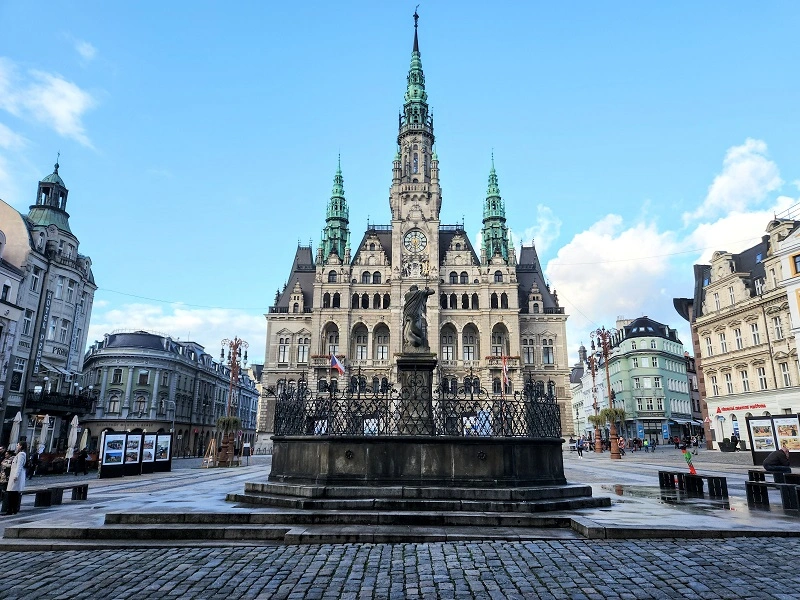
LANDEK PARK Mining Museum
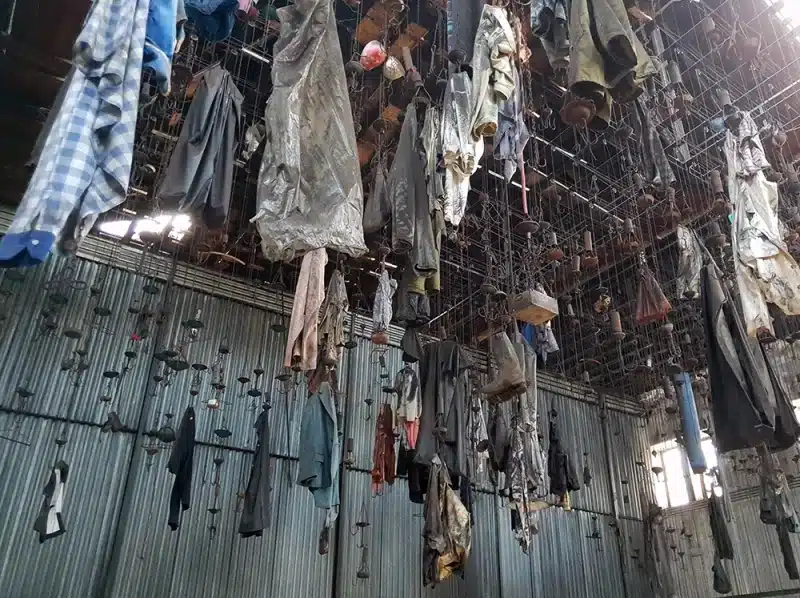
The Landek Park Mining Museum showcases the region’s coal mining heritage.
Anselm Mine is the oldest mining shaft in Ostrava, and home to the underground museum, the largest mining museum in the Czech Republic.
Visitors can discover a unique geological cut with layers of coal that are 250 million years old, as well as descending the mining pit using the original pit cage, and experience the challenges working underground on the 250-metres of subterranean pathways, guided by experienced ex-miners.
Suitable for adults and kids alike, there is an exhibition about mining rescue, one of the largest collections in the world, which includes the oldest existing breathing equipment from 1884 and SIebe-Gorman diving equipment from 1920. It’s possible to ride a former mine train from the 1960s.
Where to find it: Landek Park is located 5 km from Ostrava city on Pod Landekem 64 Street, Ostrava Petřkovice, 725 29.
Aside from the relics from the city’s industrious past, Ostrava is home to several historic landmarks and monuments which blend Gothic and baroque architecture.
- Where to find it: Pod Landekem 64, 725 29
- Website
Silesian Ostrava Castle
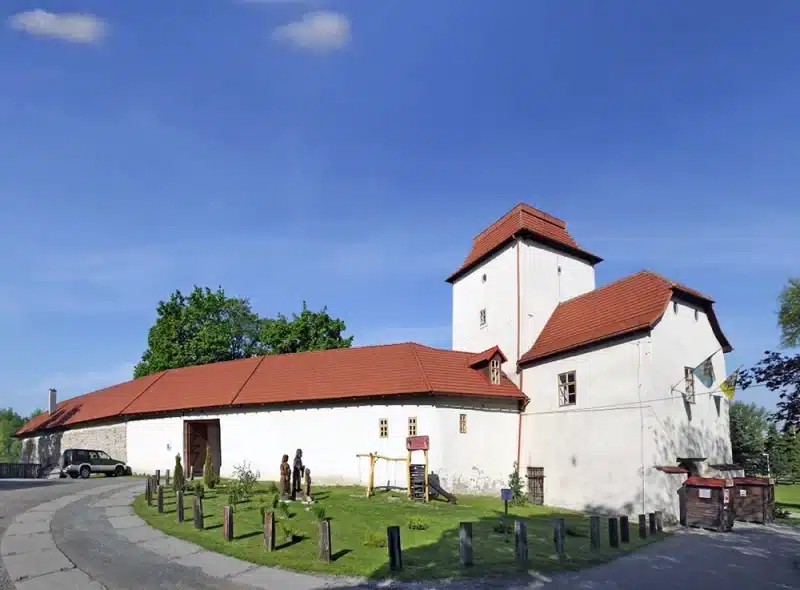
The most famous historic building, the Silesian Ostrava Castle is an example of restored Gothic castle architecture.
Situated on a hill overlooking the city, this medieval fortress has a rich history. Having undergone various renovations over the centuries, it still retains its original Gothic and Renaissance features. The castle now houses the Ostrava City Museum, where visitors can explore the city’s past, and also serves as an exhibition centre.
Interestingly, even the castle did not escape the environmental impact of mining, an industry which too has left an indelible mark on the Castle. The 13th century Castle sank an astonishing 16 metres due to the instability of its foundations caused by mining up until the 1960s.
- Where to find it: Hradní 1, 710 00 Ostrava
- Website
Ostrava’s City Halls
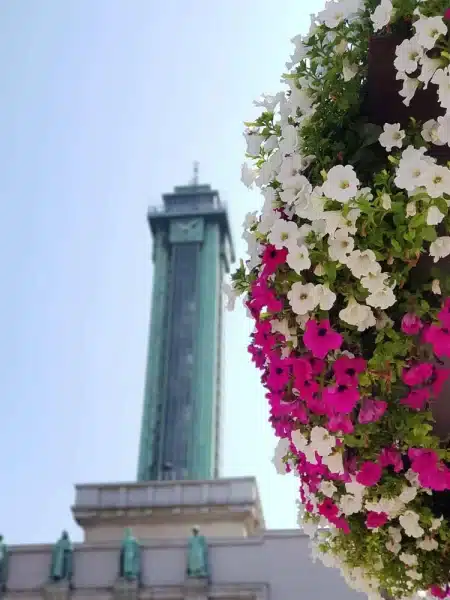
The City Halls, yes plural, in Ostrava hold a fascinating blend of historical and modern significance. While the Old Town Hall, constructed in the 15th century, stands proudly on Masaryk Square (Masarykovo náměstí), currently housing the Ostrava Museum, it served as the town hall until the early 20th century.
As the city grew, a new, larger, town hall was needed and construction began in 1925. It is known as the New City Hall.
The steel tower that graces the Hall is a surprising sight for many visitors. This functionalist-style building features an elegant, minimalist design with a variety of materials such as bronze, marble, and noble wood materials.
Outside, four 3.2 m-high bronze statues by Václav Mach symbolise the four functions of the city’s heritage; Mining, Metallurgy, Science, and Trade.
Visitors to the New City Hall can take a trip into the past via the Pasternoster elevator, a lift without doors that never stops.
What is a paternoster?
To put it simply, paternoster is a series of open compartments that continuously move up and down without ever stopping. The journey to the top takes a few minutes for a superb view from the lookout terrace at the height of 37m.
Simple video demonstrating a paternoster:
Your ticket for the tower includes a guided tour on the top where guides will happily educate visitors on Ostrava’s past and present.
- Where to find it: Prokešovo náměstí 8/1803, Moravská Ostrava a Přívoz, 70200
- More info:

Antonín Dvořák Theatre
This magnificent Neo-Renaissance building is one of the most beautiful theatres in the Czech Republic, and regularly hosts a variety of performances, including opera, ballet, and drama.
The interior artistic design is adorned with stunning frescoes and ornate decorations masterfully crafted by the renowned Viennese sculpture company, Johann Bock & Son.
The facade’s exquisite sculptural work was skillfully executed by sculptor Eduard Smetana from Ostrava, while the frontal facade bears a splendid gable sculptural group by academic sculptor Leopold Kossig from Vienna.
The ceiling painting in the auditorium, a masterpiece, was the creation of another Viennese artist, academic painter Eduard Veith. Notably, the main foyer proudly displays two generous reliefs titled “Drama” and “Music”.
The striking main curtain, an allegorical portrayal of work, trade, and art, was fashioned in the esteemed studio of painters Koutský & Rottonar in Vienna. The culmination of the architect’s vision and the collective efforts of these exceptional artists has resulted in one of the most magnificent theatres in the Czech Republic.
- Where to find it: Smetanovo náměstí 3104/8a, Moravská Ostrava a Přívoz, 70200
- Website
Karolina Triple Halls (Trojhalí Karolina)
However, Ostrava is not only defined by its historic buildings, but also by its modern architecture which has brought an exciting contemporary twist to the cityscape. The city has seen a surge in architectural innovation in recent years, with new commercial, entertainment, and residential buildings popping up all around.
One of the most prominent examples of contemporary architecture in Ostrava is the Forum Nová Karolina. This modern area includes a shopping centre, office premises and residential area opened in 2012 and occupies the site of a former coal mine and coking plant.
Amidst the contemporary edifices, the “Trojhalí,” an industrial building, stands out noticeably. Once dedicated to housing smelting works and a coke plant, it has now transformed into a versatile space where visitors can engage in sports activities, attend concerts, or marvel at captivating art exhibitions.
The Roofed Square and the Central Power Station, are safeguarded as valuable monuments of industrial architecture.
- Where to find it: K Trojhalí 3361/5, Moravská Ostrava a Přívoz, 70200
- Website
Religious architecture in Ostrava
As a nation, the Czech Republic is predominantly atheist with more than half of the population identifying as “without religious belief” in the 2021 Census.
Despite this current collective religious identity, Ostrava has numerous notable religious sites.
Evangelical Church of Christ
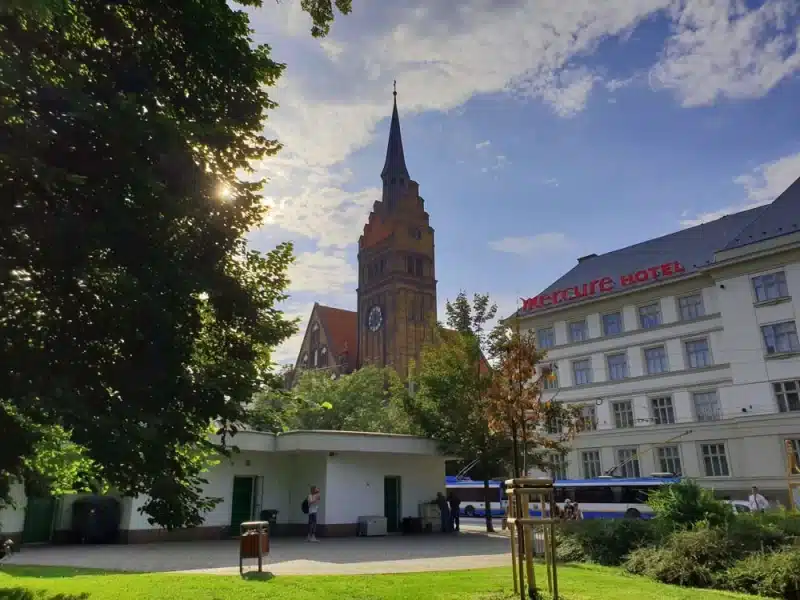
Dating back to 1907, this historic brick edifice was constructed in the Dutch Renaissance style with notable influences from the trending Art Nouveau style. The brilliant minds behind the design were Viennese architects Karl Troll and Ludwig Faigl.
The nave is adorned with a polygonal presbytery, while an asymmetrically placed square tower features a clock that, after a 15-year hiatus, began functioning once again in 2000.
Where to find it: Husovo náměstí 1188/4, Moravská Ostrava a Přívoz, 70200
Church of St. Wenceslas
The oldest surviving structure in Ostrava, the Gothic church of St. Wenceslas (Kostel Sv. Václava), stands on Romanesque origins and holds the distinction of being the oldest Catholic church in the North-Moravian metropolis.
- Where to find it: Kostelní náměstí, Moravská Ostrava a Přívoz, 70200
- Website
Church of the Immaculate Conception of Virgin Mary
Svatopluk Čech Square, situated close to the main railway station, is characterised by the prominent presence of the Church of the Immaculate Conception of Virgin Mary and the former Town Hall. The Church’s two towers, and the overall architectural layout of Přívoz, including the depiction on the square’s pavement, was skillfully crafted by the Viennese architect Camillo Sitte.
The altar painting portraying the Immaculate Conception of the Virgin Mary, created by František Ženíšek, holds immense significance. The church consecration ceremony was graced by the presence of Archduke Eugene von Habsburg.
Where to find it: Náměstí Svatopluka Čecha 507/5, Moravská Ostrava a Přívoz, 70200
Final Thoughts
In conclusion, Ostrava’s architecture tells the story of its rich history and its vision for the future. From the Gothic and baroque landmarks to contemporary and sustainable designs, the city’s architecture is a testament to its cultural and economic development and an inspiration for future generations.
Featured image by Boris Renner (Photographer), Courtesy of Visit Czechia